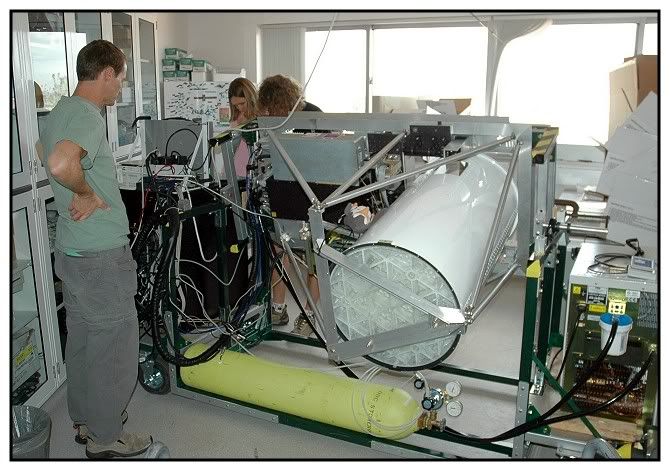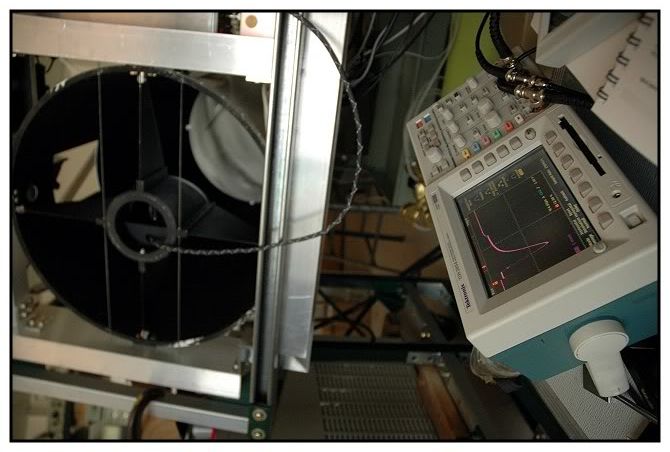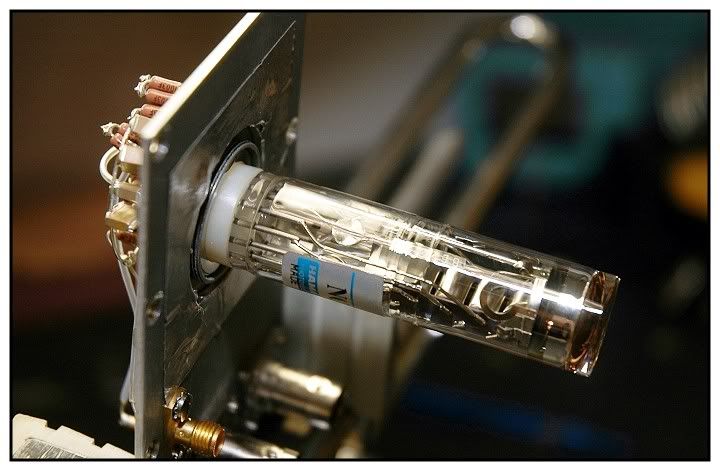The key components of a lidar are:
- A short pulse laser source (pulses less that 1 microsecond).
- A telescope to collect the return light.
- Detectors to detect the light.
- Fast analog-to-digital convertor to sample the detected signal.
- A fast computer to process this signal.

The white tube on the right is a the telescope and the laser is the small silver and black boxes just to the left of it. The large console on the far left with all the cables is te control.
Here is what the signal of a laser pulse looks like as it is received by the telescope.

And here is a special detector called a Photomultiplier tube or PMT. Photomultipliers are so sensitive they can detect individual photons. This type of detector is necessary due to the small amount of light returning from the atmosphere.

